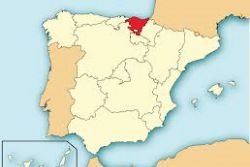- Business
- Childbirth & Education
- Legal Formalities
- Motoring
- Other
- Pensions & Benefits
- Property & Accommodation
- Taxes
- Airports and Airlines Spain
- Paramount Theme Park Murcia Spain
- Corvera International Airport Murcia Spain
- Join us for Tea on the Terrace
- When Expat Eyes Are Smiling
- Meet Wincham at The Homes, Gardens & Lifestyle Show, Calpe
- QROPS 2014
- Spain Increases IHT in Valencia & Murcia
- Removals to Spain v Exports from Spain
- The Charm of Seville
- Gibraltar Relations
- Retiro Park : Madrid
- Community Insurance in Spain
- Calendar Girls
- Considerations when Insuring your Boat in Spain
- QROPS – HMRC Introduces changes that create havoc in the market place
- QROPS – All Change From April 2012
- Liva & Laia : 15th November

Railway operator Adif Alta Velocidad will use the money to finance the ‘Y Vasca’ line, which will link the Basque cities of Vitoria, Bilbao and San Sebastián as well as improving connections between Madrid and the Basque Country, and Spain and France. The project is also part of the Trans-European Transport Network (TEN-T), more specifically the Atlantic Corridor connecting the Iberian Peninsula with Central Europe.
The new financing signed today will make it possible to build 160km of high-speed rail line between the three Basque cities, and to convert the 17km conventional line between San Sebastián and the French border for mixed use by both conventional and high-speed trains.
In addition, the project includes remodelling, adaptations and the provision of new access routes for high-speed rail at the Vitoria, Bilbao and San Sebastián train stations.
The path of the new high-speed connections is complex, with 80km of tunnels and 25km of viaducts. The new line has been designed for a speed of 250 km/h, cutting the travel time from Madrid to San Sebastián or Bilbao from the current five hours to around three and a half hours. When the Valladolid-Burgos-Vitoria section is completed, this will fall to two and a half hours.
Almost 40,000 person-years of temporary employment are expected to be generated during the implementation phase and, once operational, the new high-speed lines will need 400 people to be employed for operations and maintenance.
Recommended Reading :
* At least 4 dead and several injured after train derails in Galicia
* EU orders Spain to recover rail test state aid










